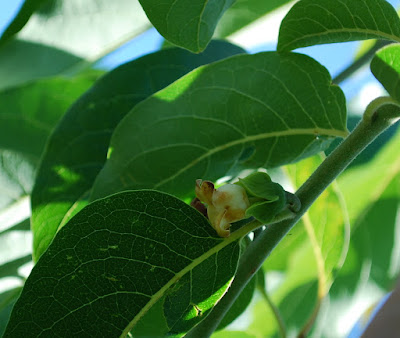 |
| Fenced Apples and Blackberries. 6.29.17 |
 |
| Ebony King Blackberries. Year 2. 6.29.17 |
 |
| Blackberry Columbia Star. One year. 6.29.17 |
The varieties are:
Ebony King - old variety, probably diploid, some thorns.
Prime Ark Freedom - new variety, tetraploid, thornless.
Columbia Star - trailing, thornless. I'm guessing this is tetraploid but I don't know yet.
Arapaho - tetraploid, thornless.
Triple Crown - I think tetraploid, thornless.
 |
| Blackberry Prime Ark Freedom. 6.29.17 |
I expect to taste some Ebony King in a few weeks, from the one plant, of three, that is producing this year. All of the Ebony King are producing primocanes now, more vigorous than last year, and I hope my enclosure prevent loss of growth this time. There may be a taste of a couple of Columbia Star blackberries, although only a couple from canes that survived the trauma and winter. Prime Ark Freedom is primocane bearing, so there is a chance to sample those in a few months.
 |
| Blackberry "Arapaho" . Two Months. 6.29.17 |
 |
| Blackberry Triple Crown. One Month. 6.29.17 |
Of the new plants that I started this spring, Arapaho is getting off to a good start, and both plants have nice primocanes emerging. They are in protected cages. I may rearrange the beds this summer or fall, for better access and neatness. The Triple Crown was blooming in the nursery pot, at only a foot tall. There is a nice primocane emerging from that one as well. I will leave the berries on the plant, to get a taste, if they develop.
If all goes well, there should be a taste of 4 varieties this year, maybe a few bowls of berries in 2018, and a good sized crop in 2019. That is a big "if", but life makes no promises. Gardening is always a bit of a guess, a bit of a gamble, some promises, some science and information, some work and some luck.













